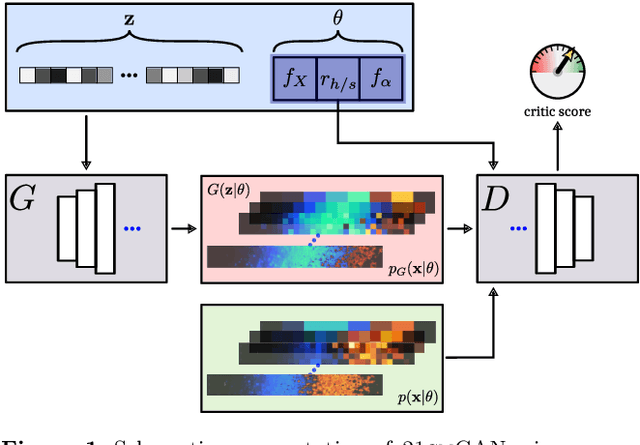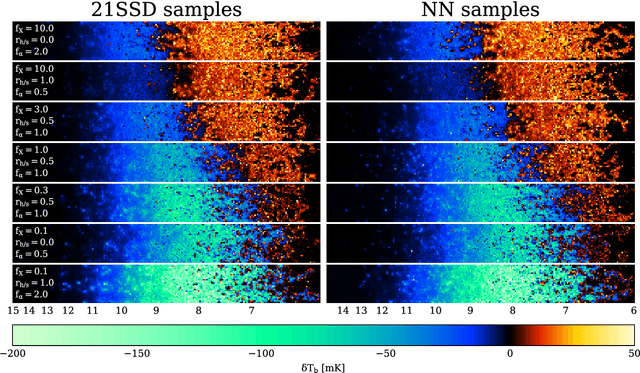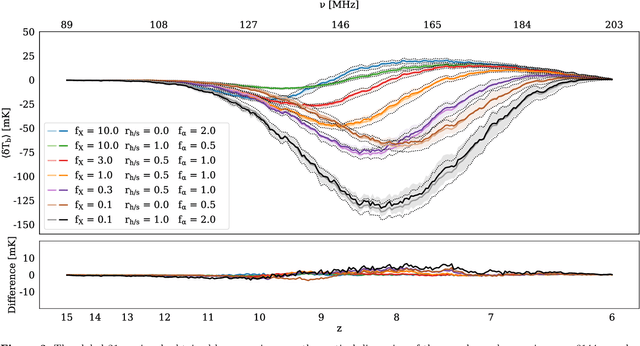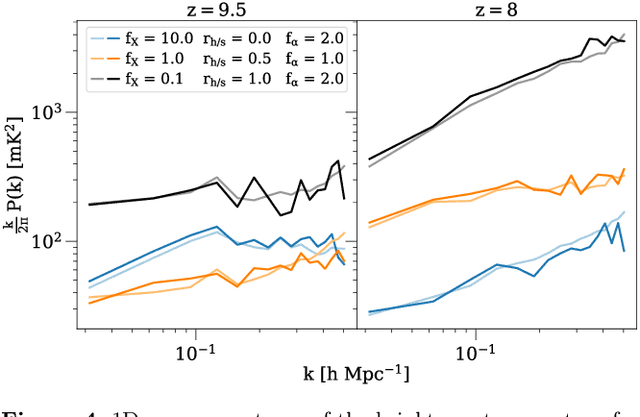A unified framework for 21cm tomography sample generation and parameter inference with Progressively Growing GANs
Paper and Code
Feb 19, 2020



Creating a database of 21cm brightness temperature signals from the Epoch of Reionisation (EoR) for an array of reionisation histories is a complex and computationally expensive task, given the range of astrophysical processes involved and the possibly high-dimensional parameter space that is to be probed. We utilise a specific type of neural network, a Progressively Growing Generative Adversarial Network (PGGAN), to produce realistic tomography images of the 21cm brightness temperature during the EoR, covering a continuous three-dimensional parameter space that models varying X-ray emissivity, Lyman band emissivity, and ratio between hard and soft X-rays. The GPU-trained network generates new samples at a resolution of $\sim 3'$ in a second (on a laptop CPU), and the resulting global 21cm signal, power spectrum, and pixel distribution function agree well with those of the training data, taken from the 21SSD catalogue \citep{Semelin2017}. Finally, we showcase how a trained PGGAN can be leveraged for the converse task of inferring parameters from 21cm tomography samples via Approximate Bayesian Computation.
 Add to Chrome
Add to Chrome Add to Firefox
Add to Firefox Add to Edge
Add to Edge